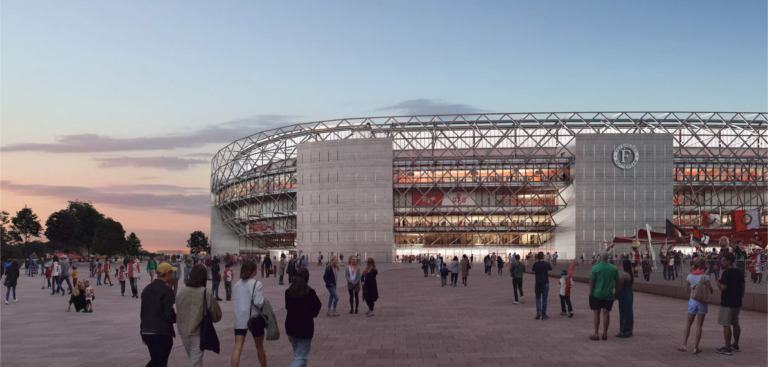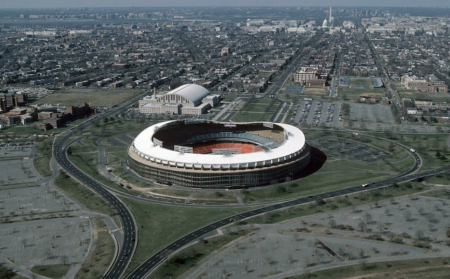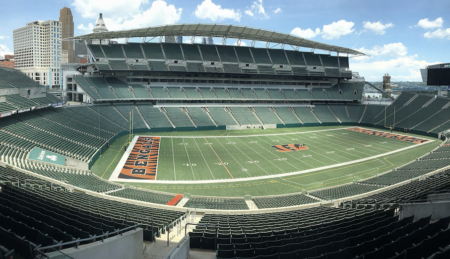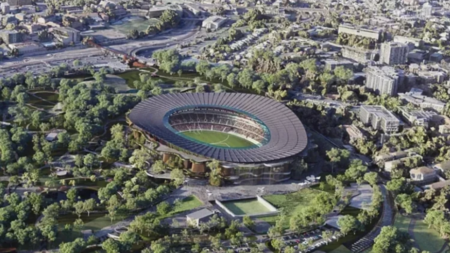OMA and LOLA have submitted the refined design of the Feyenoord Stadium, a newly-built project which would see an increase of capacity to 63,000 for the home of the Dutch soccer side.
Located along the river Nieuwe Maas, the stadium proposed by OMA and the Feyenoord Football Club is a facility for soccer and daily activities in the surrounding communities. The stadium is an ensemble of essential elements—including the stand, circulation cores, the structure, and functional spaces—each of which have been designed to maximize performance. Specifically, the three-tier stand increases the stadium’s capacity to 63,000, while placing spectators as close to the field as possible for an intimate match experience. The bowl-shaped steel structure—a diagrid that requires less structural steel than a conventional steel frame—is the primary structure supporting the stand and its roof.
All the stadium’s elements have been assembled to form a building that is more than the sum of its parts: logical and functional as De Kuip—the soccer club’s home for eight decades—and offering one of the best sightlines among stadiums of this scale, the new venue is a truly open stadium with a public concourse on the main entry level.
This design has been presented to the Quality Team in Rotterdam with the original design of the stadium being optimized to ensure on time and cost-effective delivery, while reinforcing its integrity as a vital iconic building within the Feyenoord City masterplan.
Designed in close collaboration with LOLA, the concourse is the heart of the public space. The landscape concept consists of strong access points from both sides of the city and reinforcement of the continuous river bank, including a tidal park and urban connection with the ring road. On match days, crowds will gather at the concourse before entering the stadium, while the concourse design will also distribute several slow traffic routes along the water and into the surrounding neighborhoods. The concourse acts as a raised square: a place to enjoy the view and many activities all year round, both during event days and non-match days.
The new stadium is part of the Feyenoord City masterplan, developed by OMA and LOLA, in collaboration with developer Stichting Gebiedsontwikkeling aan de Maas, the Municipality of Rotterdam, Stadium Feijenoord, and multiple other stakeholders. It was adopted by the Rotterdam City Council in October 2019. OMA has submitted the building permit and finalized detailed design for the Feyenoord Stadium this summer. Construction is scheduled to begin in 2022, with the building’s completion in 2025. The project is led by OMA Managing Partner – Architect David Gianotten, with Associate Kees van Casteren and Project Architects Shinji Takagi and Sandra Bsat.





